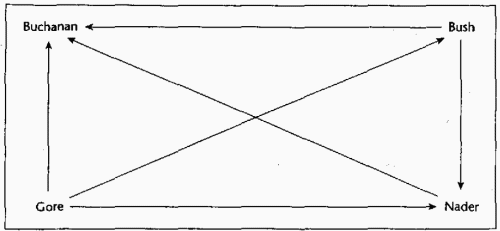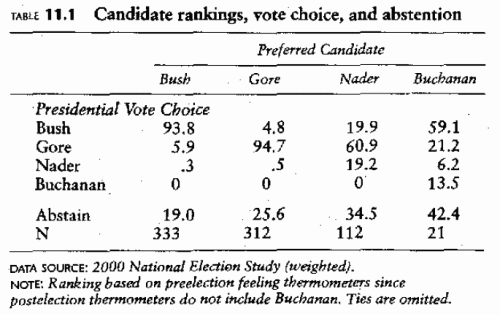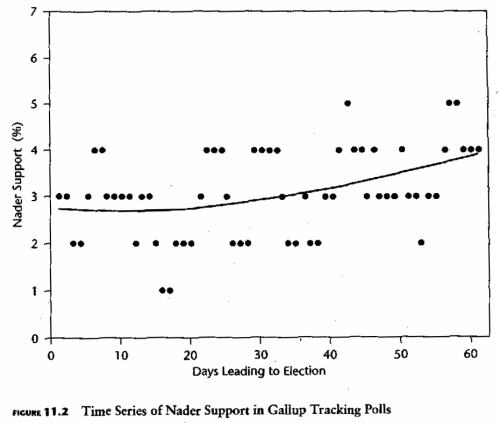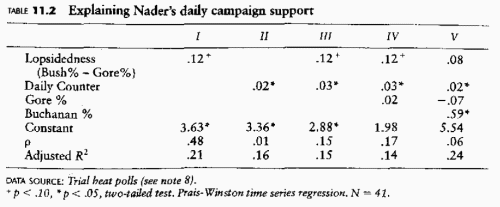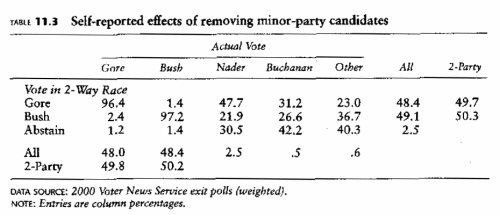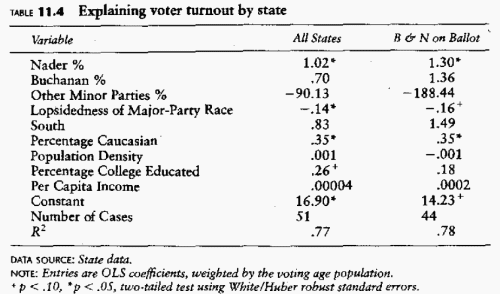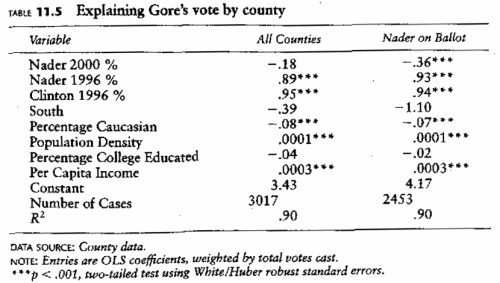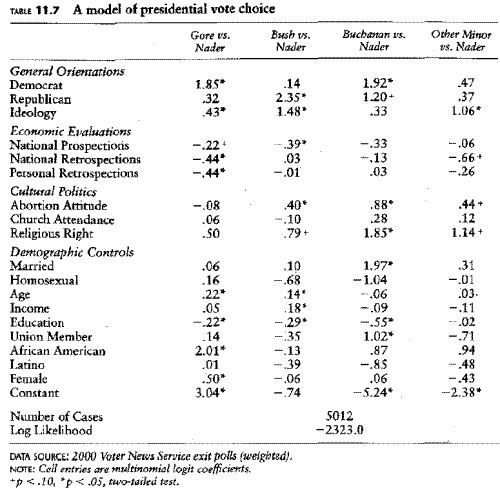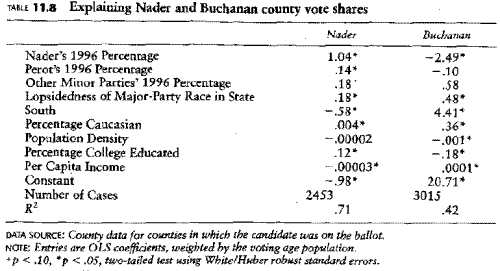Re: AN unREASONABLE MAN, directed by Henriette Mantel
Peter J. Petkas: Reflections & Reruns
Metropolitan Jonah: Diversity in Unity (Dallas, 5 April 2009)
Saturday, April 11, 2009
NOTICE: THIS WORK MAY BE PROTECTED BY COPYRIGHT
[for a video of this sermon, go to: http://video.yahoo.com/watch/4812572/12841013]
It is a great joy to see everybody here this evening from so many different communities, from different traditions. Orthodoxy is a celebration of diversity in unity, and unity in diversity. Our unity is in our one Lord and savior Jesus Christ, and our one Orthodox faith and our one commitment to living the truth, to living as Christians. Not to live according the spirit of the world, not to live according to our passions, not to live according to the desires that flit by through our minds and lead us into all sorts of trouble, but to live the truth, to live Orthodox.
And, our diversity is something we celebrate, not a diversity of lifestyles, but a diversity that reflects the whole spectrum of our community, people of all races, people of all colors, people from a multitude of different ethnic backgrounds.
And yet, there is another thing that unites us here as well: we are all Americans. We are a single community, we are a single community of Orthodox Christians, and we are the local church in Dallas, the local church in Northeast Texas. It doesn’t matter that we have all these various administrative jurisdictions, ultimately, because we gather together as one body, to pray with one mind and one heart, to celebrate the same Eucharist, to come to the same chalice. It doesn’t matter if we are eastern rite or western rite, doesn’t matter the language in the service is, but its all, we are one church, we are one local Church, and I might add, we are one indigenous Church.
Right now in world Orthodoxy there is a solution to our disunity being proposed. But I would propose there are two solutions. There’s one solution being proposed in which we all submit to Constantinople. We all submit to a foreign patriarchate where all decisions will be made there, where we will have no say in the decisions that are made. We will have no say in our own destiny. We surrender the freedom that we have embraced as American Orthodox Christians to a Patriarchate still under Islamic domination. I think we have a better solution.
And this is something of the utmost importance, and it is something imminent. It is not something where we can wait and say “Oh maybe in my grandchildren’s time there will be Orthodox unity.” I’m talking about June. And, if you think I’m kidding, there is a conference being convened in the Phanar in June to discuss exactly this - (actually, it’s in Cypress) - to subject the Diaspora to the single singular control, the so-called Diaspora, to the Patriarchate of Constantinople, and thereby come into unity.
Well, that’s one model for unity. I would submit if we wanted a Pope we’d be under the real one. And I don’t think any of us want a Pope, otherwise we wouldn’t be here.
But who are we really? I think part of this comes from a total and complete ignorance and misperception on the part of the holy fathers who are the leaders of the churches in the Old World. They don’t understand that there are Americans who are Orthodox. There are Americans who have been born and bred in this land who have embraced the Orthodox faith. There are Americans who have come over here - fleeing communism, fleeing Islamic domination, fleeing oppression. Who have come to this land to embrace a new life, a life of self-determination as well as a life that is governed by the Orthodox faith. I don’t think they understand that our church here has this rich diversity but we all share a common identity.
It doesn’t matter what language the services are in, we appreciate them all. We appreciate the Arabic and the Romanian and the Slavonic; we appreciate the Georgian and the Albanian and who knows what else. But we also have to appreciate the English and the Spanish and the French, just as we have to appreciate the Klinkit and the Aleut, and the Upik and the Athabaskian, who are the true indigenous Orthodox Christians of our land.
I don’t think the holy fathers in the Phanar understand that we are a Church, albeit with separate administrations, but that has a common value of determining our own destiny. A church that is dedicated to the conciliar process, which does not ignore the voice of the laity, which does not ignore the voice of the priests, a church which is united in its common commitment. Because we are Orthodox not simply by birth, we are Orthodox not simply by our ethnic heritage. We are Orthodox because we have chosen to be Orthodox. We are Orthodox because we have committed our entire life to Jesus Christ and the Gospel. And, it is that commitment to Jesus Christ and the Gospel and our commitment to bring our brothers and sisters in our land to that same commitment of Jesus Christ and the Gospel, not to some kind of alien ideology, not to some nationalist or imperialist ideology from some forgotten empire, not the imposition of foreign customs and the submission to foreign despots.
But, to a united Church in this country, a Church in which we value the diversity and value the unity equally. A Church in which we appreciate one another and listen to the voice of one another so that no person is devalued. So the traditions that our fathers in the faith have brought to this country are valued. So the efforts and the labor and the sweat and the blood and the tears of all those who have gone before us to establish the Orthodox Faith in America for over 200 years now, 215 years to be precise, to acknowledge their sacrifice. And, it is upon their sacrifice, upon their martyrdoms, upon their sanctity, upon their sacrifice that our Church here is built.
There are those there that say that there was no canonical Orthodox Church in the North American until 1924 until the establishment of the Patriarchate of Constantinople and the Greek archdiocese.
Excuse me. The Russian Orthodox Church established a missionary work here in 1794. It established English-speaking churches where priests were trained to speak, to serve the liturgy, to teach the Gospel, and to bring faithful people into the Orthodox Church, from 1857 in San Francisco. They say our unity in America was a myth at the time of St Tikhon. Well yes, there were a few dozen churches that were not part of it, but what about the 800 that were? What about those 800 churches? Churches that may have had Russian clergy, or had clergy who were trained by the Russians, but were composed of Greeks and Serbs, of Arabs, of Romanians, of Bulgarians, and of converts, who have stood for the integrity of the Orthodox Faith and the integrity of the Gospel of Jesus Christ, and the integrity of the witness, the missionary outreach which is essential to the Gospel of Jesus Christ. Not to make people Greeks, not to make people Russians, not to make people Arabs, but to simply bring the gospel of Jesus Christ to this land, in its wholeness and its completeness, as it was preached by the holy Apostles, in the fullness of its integrity. There are those there, in the old world, who devalue this, who say that they are the only criteria of Orthodoxy. Who are ignorant of our Saints, who refuse to recognize the sacrifice of so many of those who have come before us, in Christ, to establish the Gospel here.
I think we have a different solution.
It is imperative for us to come together. Not for all the other churches, the Antiochians and the Serbians and the Bulgarians and the Romanians and everyone, to join the OCA, but to come together in a new organization of Orthodoxy in North American that brings us all together as one Church, even just pulling together all our existing organizations so that all the bishops sit on one Synod, so that all the Metropolitans get together on a special Synod or something like that.
So we can continue our relationship with the Mother Churches, a relationship of love and support. Firm in our own identity as Orthodox Christians and making our witness to protect them from whatever evils confront them, whether it be an aggressive Islam, or whether it be Communists who now call themselves democrats (I’m not talking about Washington by the way, not at all.)
It’s very interesting. Seven months ago I was still an abbot in a monastery in northern California. Just a few months ago I was made Metropolitan and I had no idea, really, what the scope of Orthodoxy is in America. And, now I’m beginning to get an idea. Not only did I find myself the Metropolitan of the OCA, but Locum tenens of the Bulgarian diocese. Well, these are people who have fled oppression just as in so many eastern European countries. It’s the same people who were there under the communists; they just changed their titles.
It’s the same thing with the churches in the Middle East. How many hundreds of thousands of faithful Iraqi Orthodox Christians are living as refugees in camps in Jordan and Syria, ignored by the world. We need a united, powerful witness. A witness that will not only bear witness to the unity of the Gospel and our common commitment to one Faith in Jesus Christ the one Lord, one Faith, one Baptism that constitutes the Orthodox Church. We need to bear witness as a united Body, only to those issues that affect the Phanar, not only to the tragic situation in Cypress, but to those issue that affect all Orthodox Christian throughout the world. There is no witness in Congress. There has been no Orthodox voice, save one lone Serbian bishop, during the American aggression in Kosovo. There were so many hundreds and thousands of Orthodox Christians that suffered and died at our hands, and the hands of our government and our voice was muted.
We have to come together as one united Orthodox Church in North America in order to truly show people that the Orthodox Church is the One Holy Catholic Church, in order to show that truly we are the Church constituted by the Apostles of Jesus Christ. And, there is only one way to show that - not by self-righteous proclamations of our Orthodoxy it’s not by self-righteous condemnation of non-Orthodox Christians, it’s by coming together and showing people how we love one another, how we forgive one another. How we bear common witness to the Gospel. Though we have multiple churches and diverse traditions, we affirm that there is One Truth, who is the person of Jesus Christ. The Orthodox way of life is the way of the healing of the soul and the way of salvation.
It is imperative brothers and sisters, imperative on us that, we come together and with one voice, as the Orthodox Church of North America, to say to the holy fathers of the Old World, the Orthodox Church exists in North America. We are grateful for the support you have given us. We love and support your work. We rejoice in your victories and we are sad with your tragedies. But, you have to give us the freedom to take care of our own Church in our own country, in our own culture, and not to be controlled by people who have never heard a word of English much less allow a word of English to be spoken in the liturgy. We can’t allow our Church to be controlled with people who have no appreciation of our culture and have to bow to the Turkish Islamic authorities.
This, my friends, is something truly critical affecting our life and our witness. We hear of all of these scandals, all the stuff that went on in the OCA and all the stuff going on in the Antiochian Archdiocese, and all the petty little stuff that goes on in our parishes. All of that is pettiness. We have to come together. The Lord Jesus Christ is calling us together to be one Church in America, composed of all Americans, no matter where they came from, no matter how long their ancestors, or they themselves, have been in this land. Because the canonical organization of the Church, according to the Holy Apostles and all of the ancient Fathers, is not about some kind of international organization where we look 8000 miles away for some source of canonicity. But it is the local Church, the presbyters and the deacons, and the faithful people gathered around their bishop. This is the fullness of the catholic Church. This is the fullness of the Orthodox Church as it was given to us from the holy Fathers, as it was given to us by the Apostles. And, it is this that we must affirm.
That Church exists now, here, in our midst. It was planted by our Fathers in the faith generations ago, on this continent. It has grown and bears fruit. And, it subsists out of our common sacrificial commitment to Jesus Christ.
Let us give thanks to God for our unity, let us give thanks to God for our diversity. Let us affirm to our bishops that they will tell the bishops of the Old World, “There is an American Orthodox Church. Leave it alone.”
God Bless you. (transcribed from Sermon, April 5, 2009)
Metropolitan Jonah
St. Seraphim Orthodox Cathedral
April 5, 2009
Metropolitan Jonah: Diversity in Unity (Dallas, 5 April 2009)
Saturday, April 11, 2009
NOTICE: THIS WORK MAY BE PROTECTED BY COPYRIGHT
YOU ARE REQUIRED TO READ THE COPYRIGHT NOTICE AT THIS LINK BEFORE YOU READ THE FOLLOWING WORK, THAT IS AVAILABLE SOLELY FOR PRIVATE STUDY, SCHOLARSHIP OR RESEARCH PURSUANT TO 17 U.S.C. SECTION 107 AND 108. IN THE EVENT THAT THE LIBRARY DETERMINES THAT UNLAWFUL COPYING OF THIS WORK HAS OCCURRED, THE LIBRARY HAS THE RIGHT TO BLOCK THE I.P. ADDRESS AT WHICH THE UNLAWFUL COPYING APPEARED TO HAVE OCCURRED. THANK YOU FOR RESPECTING THE RIGHTS OF COPYRIGHT OWNERS.
[for a video of this sermon, go to: http://video.yahoo.com/watch/4812572/12841013]
It is a great joy to see everybody here this evening from so many different communities, from different traditions. Orthodoxy is a celebration of diversity in unity, and unity in diversity. Our unity is in our one Lord and savior Jesus Christ, and our one Orthodox faith and our one commitment to living the truth, to living as Christians. Not to live according the spirit of the world, not to live according to our passions, not to live according to the desires that flit by through our minds and lead us into all sorts of trouble, but to live the truth, to live Orthodox.
And, our diversity is something we celebrate, not a diversity of lifestyles, but a diversity that reflects the whole spectrum of our community, people of all races, people of all colors, people from a multitude of different ethnic backgrounds.
And yet, there is another thing that unites us here as well: we are all Americans. We are a single community, we are a single community of Orthodox Christians, and we are the local church in Dallas, the local church in Northeast Texas. It doesn’t matter that we have all these various administrative jurisdictions, ultimately, because we gather together as one body, to pray with one mind and one heart, to celebrate the same Eucharist, to come to the same chalice. It doesn’t matter if we are eastern rite or western rite, doesn’t matter the language in the service is, but its all, we are one church, we are one local Church, and I might add, we are one indigenous Church.
Right now in world Orthodoxy there is a solution to our disunity being proposed. But I would propose there are two solutions. There’s one solution being proposed in which we all submit to Constantinople. We all submit to a foreign patriarchate where all decisions will be made there, where we will have no say in the decisions that are made. We will have no say in our own destiny. We surrender the freedom that we have embraced as American Orthodox Christians to a Patriarchate still under Islamic domination. I think we have a better solution.
And this is something of the utmost importance, and it is something imminent. It is not something where we can wait and say “Oh maybe in my grandchildren’s time there will be Orthodox unity.” I’m talking about June. And, if you think I’m kidding, there is a conference being convened in the Phanar in June to discuss exactly this - (actually, it’s in Cypress) - to subject the Diaspora to the single singular control, the so-called Diaspora, to the Patriarchate of Constantinople, and thereby come into unity.
Well, that’s one model for unity. I would submit if we wanted a Pope we’d be under the real one. And I don’t think any of us want a Pope, otherwise we wouldn’t be here.
But who are we really? I think part of this comes from a total and complete ignorance and misperception on the part of the holy fathers who are the leaders of the churches in the Old World. They don’t understand that there are Americans who are Orthodox. There are Americans who have been born and bred in this land who have embraced the Orthodox faith. There are Americans who have come over here - fleeing communism, fleeing Islamic domination, fleeing oppression. Who have come to this land to embrace a new life, a life of self-determination as well as a life that is governed by the Orthodox faith. I don’t think they understand that our church here has this rich diversity but we all share a common identity.
It doesn’t matter what language the services are in, we appreciate them all. We appreciate the Arabic and the Romanian and the Slavonic; we appreciate the Georgian and the Albanian and who knows what else. But we also have to appreciate the English and the Spanish and the French, just as we have to appreciate the Klinkit and the Aleut, and the Upik and the Athabaskian, who are the true indigenous Orthodox Christians of our land.
I don’t think the holy fathers in the Phanar understand that we are a Church, albeit with separate administrations, but that has a common value of determining our own destiny. A church that is dedicated to the conciliar process, which does not ignore the voice of the laity, which does not ignore the voice of the priests, a church which is united in its common commitment. Because we are Orthodox not simply by birth, we are Orthodox not simply by our ethnic heritage. We are Orthodox because we have chosen to be Orthodox. We are Orthodox because we have committed our entire life to Jesus Christ and the Gospel. And, it is that commitment to Jesus Christ and the Gospel and our commitment to bring our brothers and sisters in our land to that same commitment of Jesus Christ and the Gospel, not to some kind of alien ideology, not to some nationalist or imperialist ideology from some forgotten empire, not the imposition of foreign customs and the submission to foreign despots.
But, to a united Church in this country, a Church in which we value the diversity and value the unity equally. A Church in which we appreciate one another and listen to the voice of one another so that no person is devalued. So the traditions that our fathers in the faith have brought to this country are valued. So the efforts and the labor and the sweat and the blood and the tears of all those who have gone before us to establish the Orthodox Faith in America for over 200 years now, 215 years to be precise, to acknowledge their sacrifice. And, it is upon their sacrifice, upon their martyrdoms, upon their sanctity, upon their sacrifice that our Church here is built.
There are those there that say that there was no canonical Orthodox Church in the North American until 1924 until the establishment of the Patriarchate of Constantinople and the Greek archdiocese.
Excuse me. The Russian Orthodox Church established a missionary work here in 1794. It established English-speaking churches where priests were trained to speak, to serve the liturgy, to teach the Gospel, and to bring faithful people into the Orthodox Church, from 1857 in San Francisco. They say our unity in America was a myth at the time of St Tikhon. Well yes, there were a few dozen churches that were not part of it, but what about the 800 that were? What about those 800 churches? Churches that may have had Russian clergy, or had clergy who were trained by the Russians, but were composed of Greeks and Serbs, of Arabs, of Romanians, of Bulgarians, and of converts, who have stood for the integrity of the Orthodox Faith and the integrity of the Gospel of Jesus Christ, and the integrity of the witness, the missionary outreach which is essential to the Gospel of Jesus Christ. Not to make people Greeks, not to make people Russians, not to make people Arabs, but to simply bring the gospel of Jesus Christ to this land, in its wholeness and its completeness, as it was preached by the holy Apostles, in the fullness of its integrity. There are those there, in the old world, who devalue this, who say that they are the only criteria of Orthodoxy. Who are ignorant of our Saints, who refuse to recognize the sacrifice of so many of those who have come before us, in Christ, to establish the Gospel here.
I think we have a different solution.
It is imperative for us to come together. Not for all the other churches, the Antiochians and the Serbians and the Bulgarians and the Romanians and everyone, to join the OCA, but to come together in a new organization of Orthodoxy in North American that brings us all together as one Church, even just pulling together all our existing organizations so that all the bishops sit on one Synod, so that all the Metropolitans get together on a special Synod or something like that.
So we can continue our relationship with the Mother Churches, a relationship of love and support. Firm in our own identity as Orthodox Christians and making our witness to protect them from whatever evils confront them, whether it be an aggressive Islam, or whether it be Communists who now call themselves democrats (I’m not talking about Washington by the way, not at all.)
It’s very interesting. Seven months ago I was still an abbot in a monastery in northern California. Just a few months ago I was made Metropolitan and I had no idea, really, what the scope of Orthodoxy is in America. And, now I’m beginning to get an idea. Not only did I find myself the Metropolitan of the OCA, but Locum tenens of the Bulgarian diocese. Well, these are people who have fled oppression just as in so many eastern European countries. It’s the same people who were there under the communists; they just changed their titles.
It’s the same thing with the churches in the Middle East. How many hundreds of thousands of faithful Iraqi Orthodox Christians are living as refugees in camps in Jordan and Syria, ignored by the world. We need a united, powerful witness. A witness that will not only bear witness to the unity of the Gospel and our common commitment to one Faith in Jesus Christ the one Lord, one Faith, one Baptism that constitutes the Orthodox Church. We need to bear witness as a united Body, only to those issues that affect the Phanar, not only to the tragic situation in Cypress, but to those issue that affect all Orthodox Christian throughout the world. There is no witness in Congress. There has been no Orthodox voice, save one lone Serbian bishop, during the American aggression in Kosovo. There were so many hundreds and thousands of Orthodox Christians that suffered and died at our hands, and the hands of our government and our voice was muted.
We have to come together as one united Orthodox Church in North America in order to truly show people that the Orthodox Church is the One Holy Catholic Church, in order to show that truly we are the Church constituted by the Apostles of Jesus Christ. And, there is only one way to show that - not by self-righteous proclamations of our Orthodoxy it’s not by self-righteous condemnation of non-Orthodox Christians, it’s by coming together and showing people how we love one another, how we forgive one another. How we bear common witness to the Gospel. Though we have multiple churches and diverse traditions, we affirm that there is One Truth, who is the person of Jesus Christ. The Orthodox way of life is the way of the healing of the soul and the way of salvation.
It is imperative brothers and sisters, imperative on us that, we come together and with one voice, as the Orthodox Church of North America, to say to the holy fathers of the Old World, the Orthodox Church exists in North America. We are grateful for the support you have given us. We love and support your work. We rejoice in your victories and we are sad with your tragedies. But, you have to give us the freedom to take care of our own Church in our own country, in our own culture, and not to be controlled by people who have never heard a word of English much less allow a word of English to be spoken in the liturgy. We can’t allow our Church to be controlled with people who have no appreciation of our culture and have to bow to the Turkish Islamic authorities.
This, my friends, is something truly critical affecting our life and our witness. We hear of all of these scandals, all the stuff that went on in the OCA and all the stuff going on in the Antiochian Archdiocese, and all the petty little stuff that goes on in our parishes. All of that is pettiness. We have to come together. The Lord Jesus Christ is calling us together to be one Church in America, composed of all Americans, no matter where they came from, no matter how long their ancestors, or they themselves, have been in this land. Because the canonical organization of the Church, according to the Holy Apostles and all of the ancient Fathers, is not about some kind of international organization where we look 8000 miles away for some source of canonicity. But it is the local Church, the presbyters and the deacons, and the faithful people gathered around their bishop. This is the fullness of the catholic Church. This is the fullness of the Orthodox Church as it was given to us from the holy Fathers, as it was given to us by the Apostles. And, it is this that we must affirm.
That Church exists now, here, in our midst. It was planted by our Fathers in the faith generations ago, on this continent. It has grown and bears fruit. And, it subsists out of our common sacrificial commitment to Jesus Christ.
Let us give thanks to God for our unity, let us give thanks to God for our diversity. Let us affirm to our bishops that they will tell the bishops of the Old World, “There is an American Orthodox Church. Leave it alone.”
God Bless you. (transcribed from Sermon, April 5, 2009)
Metropolitan Jonah
St. Seraphim Orthodox Cathedral
April 5, 2009


